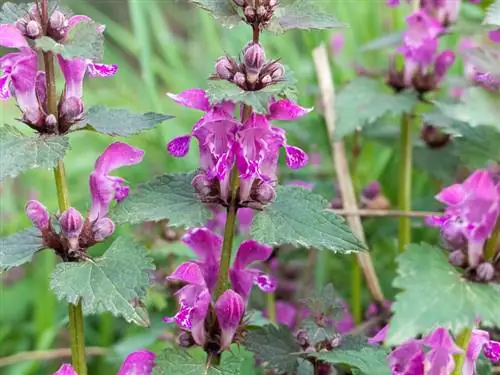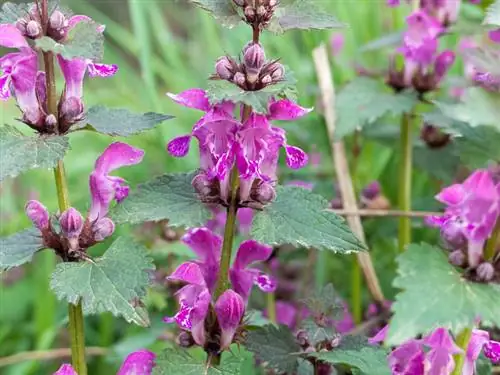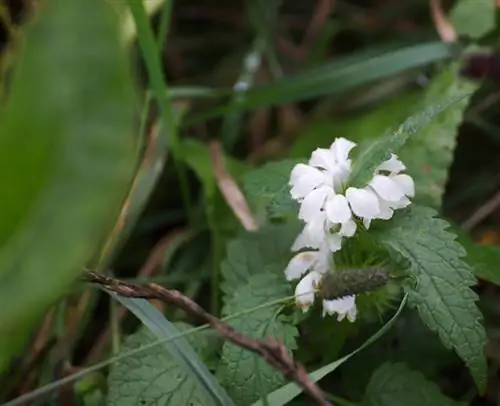- Author admin [email protected].
- Public 2023-12-16 16:46.
- Last modified 2025-01-23 11:20.
It is not one of the rare plants. On the contrary, the red deadnettle, also known as the purple deadnettle, can be found in the most remote and barren locations. Below you will find all the important information about this herb.

What are the main characteristics of the red deadnettle?
The red deadnettle (Lamium purpureum) is an annual plant from the mint family. It grows in gardens, fallow land, fields and roadsides, preferably on fresh, nutrient-rich and loose soil. Its flowering period extends from April to October and features purple labial flowers.
All facts in profile format
- Plant family: Mint family
- Botanical name: Lamium purpureum
- Lifespan: one year
- Origin: Europe
- Occurrence: Gardens, fallow land, fields, roadsides
- Growth: low, upright
- Leaves: green, ovoid, notched
- Flowering period: April to October
- Flowers: purple, lip blossoms
- Fruits: four-part split fruits
- Location: Sun to partial shade
- Soil: fresh, nutrient-rich, loose
An annual and commonly found plant
The red deadnettle is an annual plant that is very similar in appearance to the spotted deadnettle. It can be found on roadsides, in gardens, in meadows, on the edges of forests and on fallow land. It prefers to inhabit loose, fresh and nutrient-rich clay soils. It is considered the most common deadnettle species.
A view from bottom to top
Take a look at this plant: it grows between 15 and 50 cm tall. Their growth is upright, slender and appears bushy overall. Overall, one can say that the red deadnettle is extremely fast-growing. In spring she is one of the first to green up the dreary landscape.
The notched leaves lie on angular stems. When they shoot, they still have a reddish tinge, but later become medium green. They taper towards the front and while the lowest leaves are heart-shaped, the upper leaves are egg-shaped. The arrangement of the leaves, which are up to 5 cm long, is opposite. They resemble the leaves of the white deadnettle.
The flowering season begins
The flowers form at the top in April. This means that the flowering period begins almost at the same time as that of the white deadnettle. Sometimes the flowers are already present in March or even in winter. The flowering period extends until October.
The individual flowers are arranged together in false whorls. They are located in the upper leaf axils. Their greenish calyx is hairy and they reach a length of around 1 cm. A purple describes their color.
Tip
The flowers can often be seen even in winter and can be easily cut as cut flowers for the vase.






